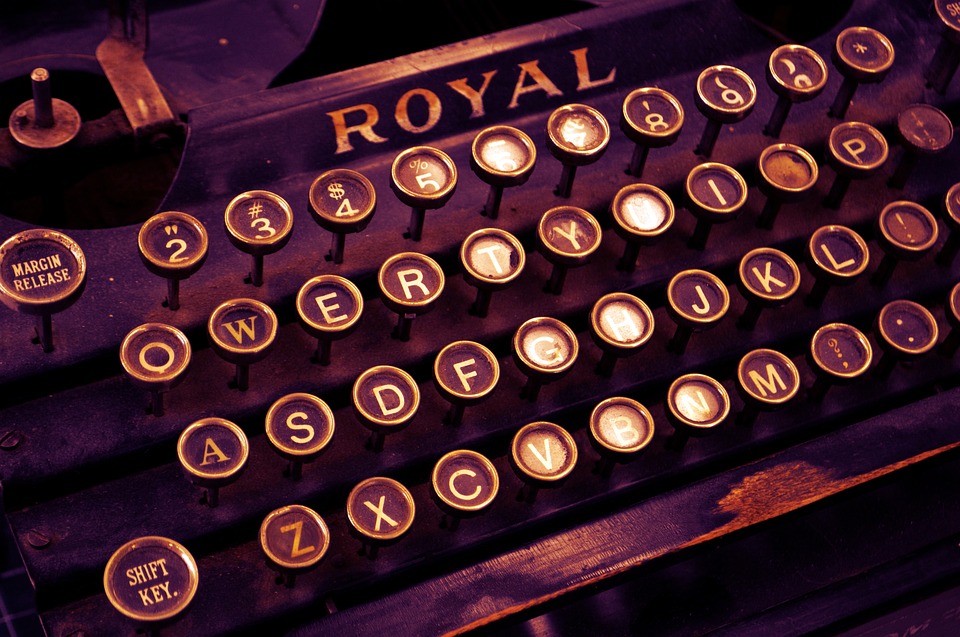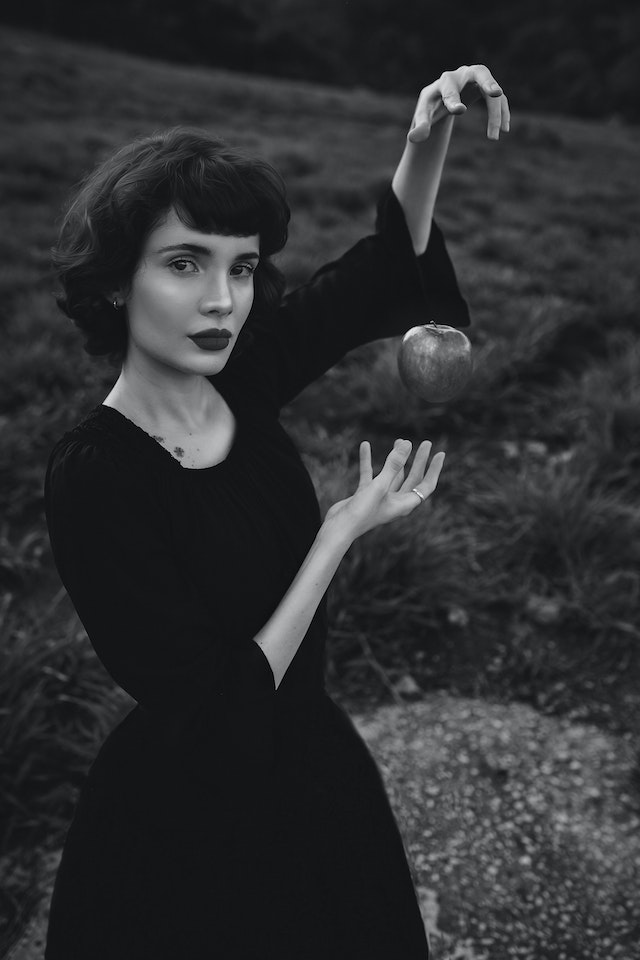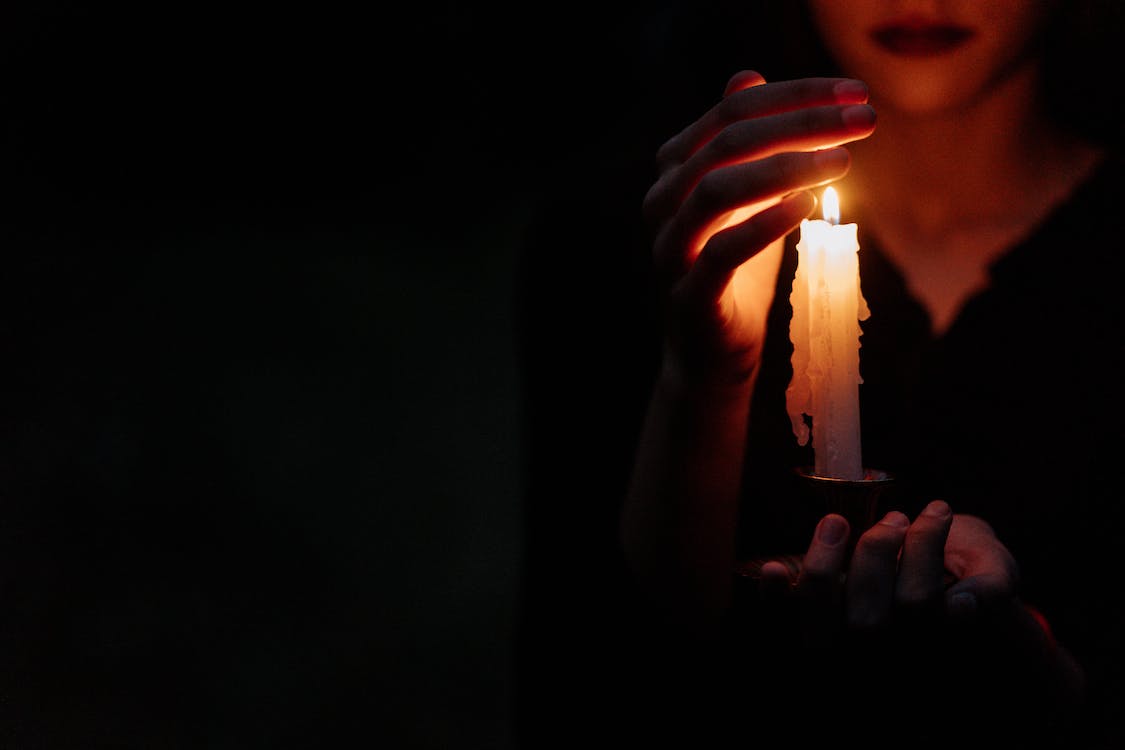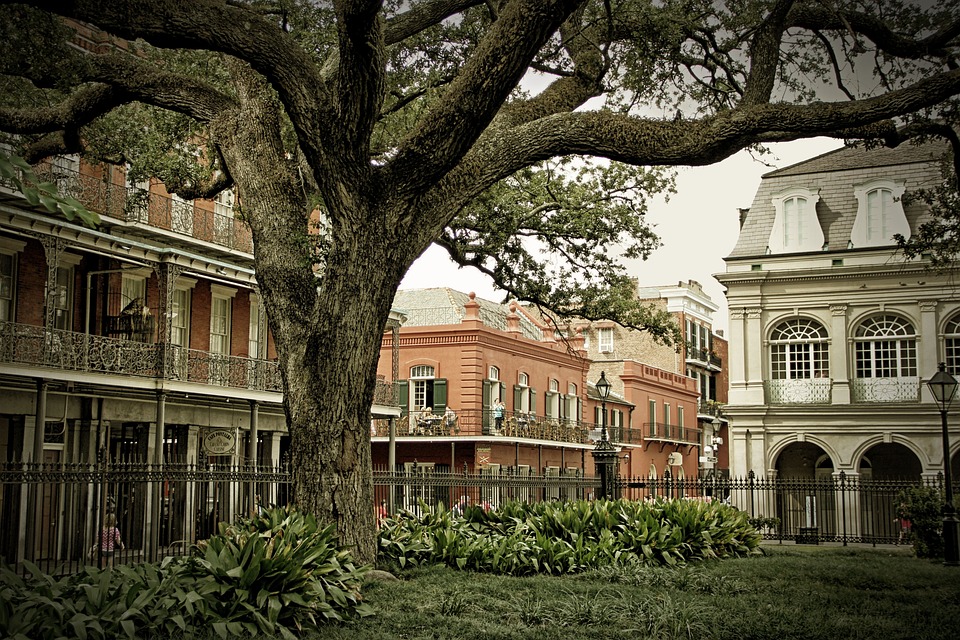“I can’t just leave you here,” said my Mercedes-driving, smooth-talking Uber driver. There were smashing bottles, and a small crowd comprised of nervous tourists and locals hoping to offer them something more illicit than their fears.
I was there earlier than my friends.
My driver walked me to the door. I knocked three times, and when I saw her behind the counter, I said it in my head three times:
Bloody Mary
Bloody Mary
Bloody Mary
When she opened the door, the crowd moved away. I entered. She locked the door and invited me to have a look around.
She asked for a password.
“Let me in please?” I offered.
Part I: The Space Between
Apparently I failed, though in reality, I’m sure the password is more an assertion of space; the chipping away of the ego that Mary promises is important to forget in communication with those beyond.
Plus, I imagine being a woman accused of chicanery running a small but mighty shop means a lot of egos come through the door, so I respect that deterrence.
Occult stores come in various types. You’ve got your esoteric stores which blend the love and light / angels spectrum of magic with common divinatory tools like runes and tarot. Then there are the earthy ones that try to strike a balance. You’ve also got shops geared more towards occultists, ceremonial magicians, and goths into the aesthetic.
Bloody Mary’s shop has most of the sections you’d expect in these types of shops, plus a handcrafted voodoo objects selection supplemented by out-of-the-box ouija boards.
I remarked on her tarot section, as I do read tarot. Bloody Mary mentioned that she doesn’t have much use for tarot because as a medium, she can have a direct connection. I thought about taking that conversation in many directions (I don’t typically use tarot to get answers from the dead, for example), but instead I opted to learn more about her gifts. I didn’t hide anything about my own beliefs or sensitivities, and she was pretty upfront too: she maintained that her talents were real, but she sold everything under the witchy sun to make sure customers could get what they wanted. “People like them,” she commented about the tarot. And I do — I came back the next day to buy a deck.
I wasn’t looking for her to prove herself, and I did more listening than talking. She was a generous giver of information — something I’d say is a theme for Bloody Mary: she seems to see little reason to hold back on most things, including who or what she connects with, and so on.
My own background with seances is a bit different: I hadn’t been to any before, but I had been in a show called “Miss Lilly’s Séance Parlor,” portraying the spirit of a little girl who communicated with guests of the show via a ouija board. I did so in the basement of this facility, breathing in goodness-knows-what as I worked the machine that would answer an audience member’s question live. They knew they were consenting to a show, which is why I felt fine playing that role. I had once been a little girl, after all.
The second experience was with the same theatrical group. I portrayed a woman who wanted to believe in a historical Victorian séance demonstration, where we taught the audience about knocks, raps, and spirit horns, exposing tricks that fake mediums have historically used to trick the public. We’d go through the scene once, during which the audience would see what my character experienced, then they’d see it again, but we’d pause and the director would explain the trick during the stop scene.
Once my friends arrived, I was reminded of this by the presence of a spirit horn in the séance room. Now, I do not consider this a symbol of fakery at all, but of heritage and history and aesthetic — all things I personally adore in my own witchy decor. But, it was a reminder.
Note: I won’t be going into detail about my friends’ experiences because those experiences and ancestors are their own, though mine will get some details because those are mine.
Part II: The Séance Room
Prior to the séance, Bloody Mary showed us around a bit and let us feel comfortable in her space, which I found welcoming. As soon as I entered, I felt like I was in a protected area. It seemed kind of like the locals weren’t interested in messing with her, either. We were asked to choose a book that spoke to us, and one called out to me kind of visually like a tarot card sometimes does, so I picked it. Then she asked us to write some specific things in the notebook. I won’t disclose because I don’t want to ruin the experience, but I will say that I was careful about how I wrote and what I said, while still being honest, because I understand some basics about practical informational as well as magical practitioner exchanges and interactions.
The séance had from familiar elements to it, for anyone who has watched media about this sort of experience, but also some voodoo elements to which I was not accustomed (that is not my tradition, nor should it belong to me). There were candles, a bell, and lots of doing things in threes, which provided order to the ritual in addition to symbolic meanings.
Mary went to each of us, asking us to call our ancestor or ask about a past life or animal guide as we wished. Going in, I thought I was going to ask about my grandmother, Helen. But when it came to me near the end of the séance, I realized I already speak to Grammy a lot, and we already said what we had to say to each other before she died. Plus, if I have to know what she’d think, I can usually figure it out for myself, or I could ask my mom (her daughter), who is still living. A lot of times I do find myself asking how Grammy did something, usually before current technology — after all, I remember the day she got a microwave oven!
Anyway, I felt compelled to call someone else:
Patrick Conlogue
Patrick Conlogue
Patrick Conlogue
She asked for me to call him again, and I did. Then she said he was wearing sunglasses — which I found to be odd, considering he is an ancestor who died fighting for the Union in the American Civil War at Antietam in the 1860s. As the reading went on, I wasn’t shy about let her knowing that — or that two of the people in the room with us had accompanied me to see the very site of his death.
I didn’t get much information about poor Patrick, but she did provide me with some symbols: something I could use to remember this ancestor on my altar, his role watching over me (which wasn’t what I’d expected), and symbols he favored, with which to make a sigil. I’m not sure how Patrick felt religiously, but I do find it interesting that there was no cross included as he was Catholic — and so is Mary. Like many practitioners, she gathers her beliefs through life.
I see no problem with that and think that it’s unrealistic for most of us to say that Christianity has not influenced our spiritual beliefs, even if, like me, one has never been baptized. As a universalist overall, I happen to think Jesus is probably chill with witches.
Towards the end of our séance session, Mary asked us to reveal the inside back cover, which featured a lwa (loa). Each lwa had a meaning, which we learned about.
Overall, I felt entertained and felt like I learned some ritual things throughout the séance, some of which are closed practice and I won’t use, and some of which are not, and I may. I can’t say that it felt accurate, but I got what I wanted out of it, and found the readings my friends got to be anywhere from accurate to amusing.
Part III: The Upside Down Upstairs
I’ve visited New Orleans a few times — this is my fourth trip, now — and never knew the city before Hurricane Katrina. However, over the past decade, I’ve seen a change that will likely reflect how we feel about COVID years from now — that over time, people are still drinking about it, but now they’re talking about it and sharing more stories with outsiders as part of their heritage.
One of my deepest beliefs is that storytelling is centric to witchcraft, and this sad magic, which I feel so very distantly but deeply in my own Irish American tradition, has a power of remembering. New Orleans magic is bold, spicy, bloody, and unapologetic. It’s not a pleasant blend, but it’s a real blend. A survivor’s treasure, which makes it more valuable than ichor.
Content Warning: Hurricane Katrina, domestic violence implication
I won’t reveal it all in case you’d like to take the tour, but the upstairs is a Katrina story, and it has Katrina magic.
Say what you want about how Mary might have fooled us, maybe I’m more sensitive to EMP or something, whatever — but I don’t have ghost hunting experience like the other people in my group. Sometimes I’m just aware of things. I thought I’d be super afraid of what was evidently a creepy doll room, being in a house of voodoo and all. Nah. Not creepy, just present.
There was a threshold to a kitchen I knew I was not supposed to cross.
Do not cross.
Do not cross.
Do not cross.
So I wouldn’t forget it, I had actually drawn the sigil Mary had suggested on my hand, and I tried willing my ancestor to protect me even though I’m not really convinced she was bringing him over. (I do think the symbols were fantastic suggestions and have real power, though, as I assign them real power.) I wouldn’t go in there until Mary went in right next to me, and she wouldn’t say why.
She wanted us to explore and use the ghost equipment, which I wasn’t really interested in. If I want to know whether something is there, I feel it. And that is what I felt: do not do. But it’s New Orleans, so I did it anyway.
(If you want to read about the true, tragic story of these Katrina victims, read here. The details are not pleasant, and this article only lightly covers them. However, from a storytelling standpoint, I find this article important because of when it was published: 2005, just months after Katrina.)
Afterthoughts
It’s been only four days since the séance, with much of the time between spent in liminal spaces like a hotel room and airports, and much of it spent in a city that endures while it embraces resounding difficulty. From the perspective of a tourist, New Orleans could seem to exist for the macabre; to serve dark tourists in seek of a thrill. But it feels much too sunken and sacred for that. It is permanently liminal and transformative, and whether seances are real or not, and mediums are true — the stories they keep certainly are.
If you’ve been there for more than five minutes…
If you’ve walked down the street…
If you’ve done a séance or not…
If you know, you know.
Helpful Resources
Are you a white person looking for more information on how to incorporate what we commonly call witchcraft practices into your own without being appropriative? Start here. Then do better.
Interested in knowing what I felt compelled to pick up from Bloody Mary’s store? Check it out here.









